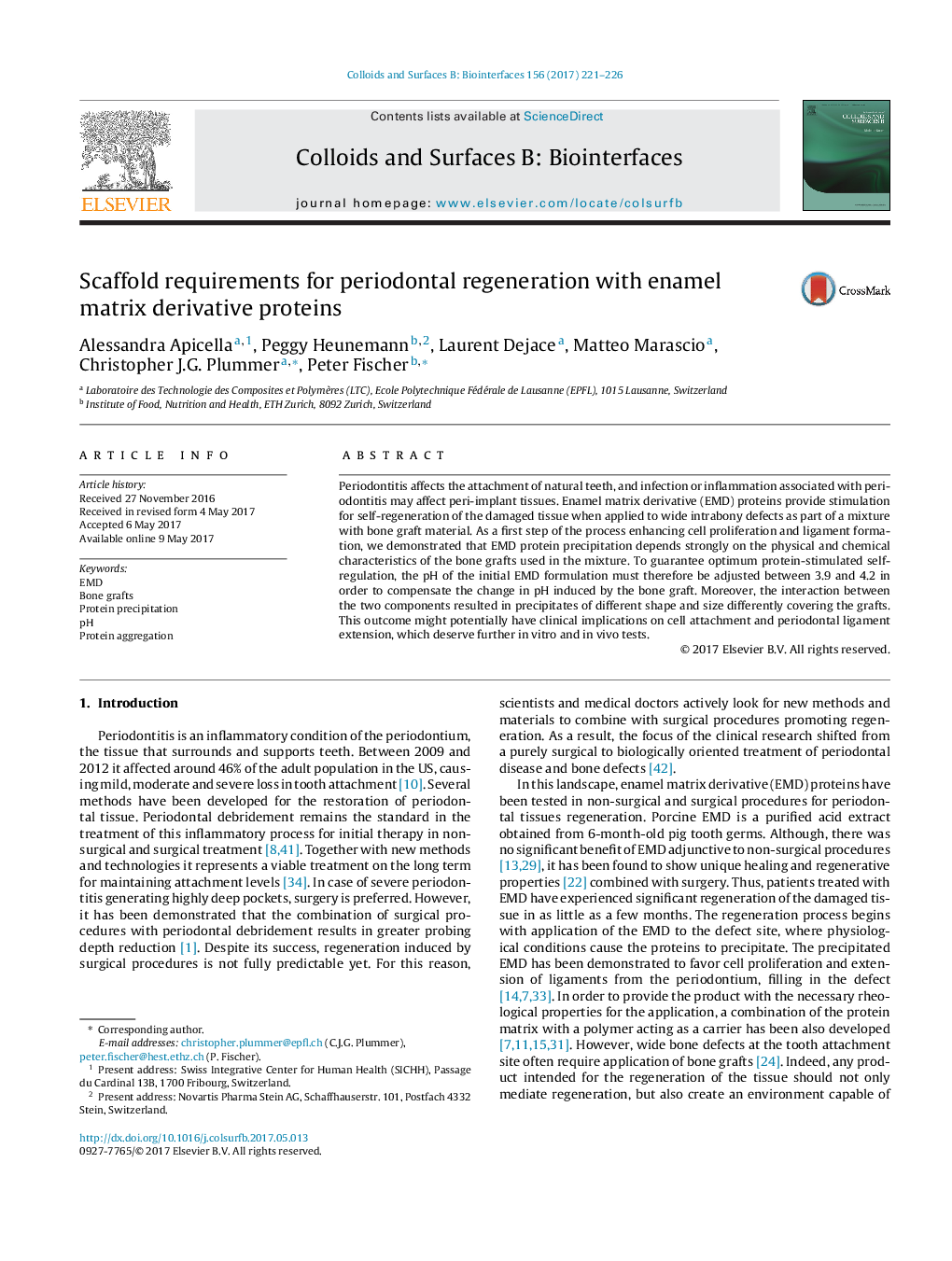| کد مقاله | کد نشریه | سال انتشار | مقاله انگلیسی | نسخه تمام متن |
|---|---|---|---|---|
| 4983276 | 1454248 | 2017 | 6 صفحه PDF | دانلود رایگان |
- Use of EMD protein - bone graft composition as new dental material.
- Physico-chemical guidelines to control EMD protein precipitation.
- Different EMD protein on different bone graft material.
Periodontitis affects the attachment of natural teeth, and infection or inflammation associated with periodontitis may affect peri-implant tissues. Enamel matrix derivative (EMD) proteins provide stimulation for self-regeneration of the damaged tissue when applied to wide intrabony defects as part of a mixture with bone graft material. As a first step of the process enhancing cell proliferation and ligament formation, we demonstrated that EMD protein precipitation depends strongly on the physical and chemical characteristics of the bone grafts used in the mixture. To guarantee optimum protein-stimulated self-regulation, the pH of the initial EMD formulation must therefore be adjusted between 3.9 and 4.2 in order to compensate the change in pH induced by the bone graft. Moreover, the interaction between the two components resulted in precipitates of different shape and size differently covering the grafts. This outcome might potentially have clinical implications on cell attachment and periodontal ligament extension, which deserve further in vitro and in vivo tests.
131
Journal: Colloids and Surfaces B: Biointerfaces - Volume 156, 1 August 2017, Pages 221-226
